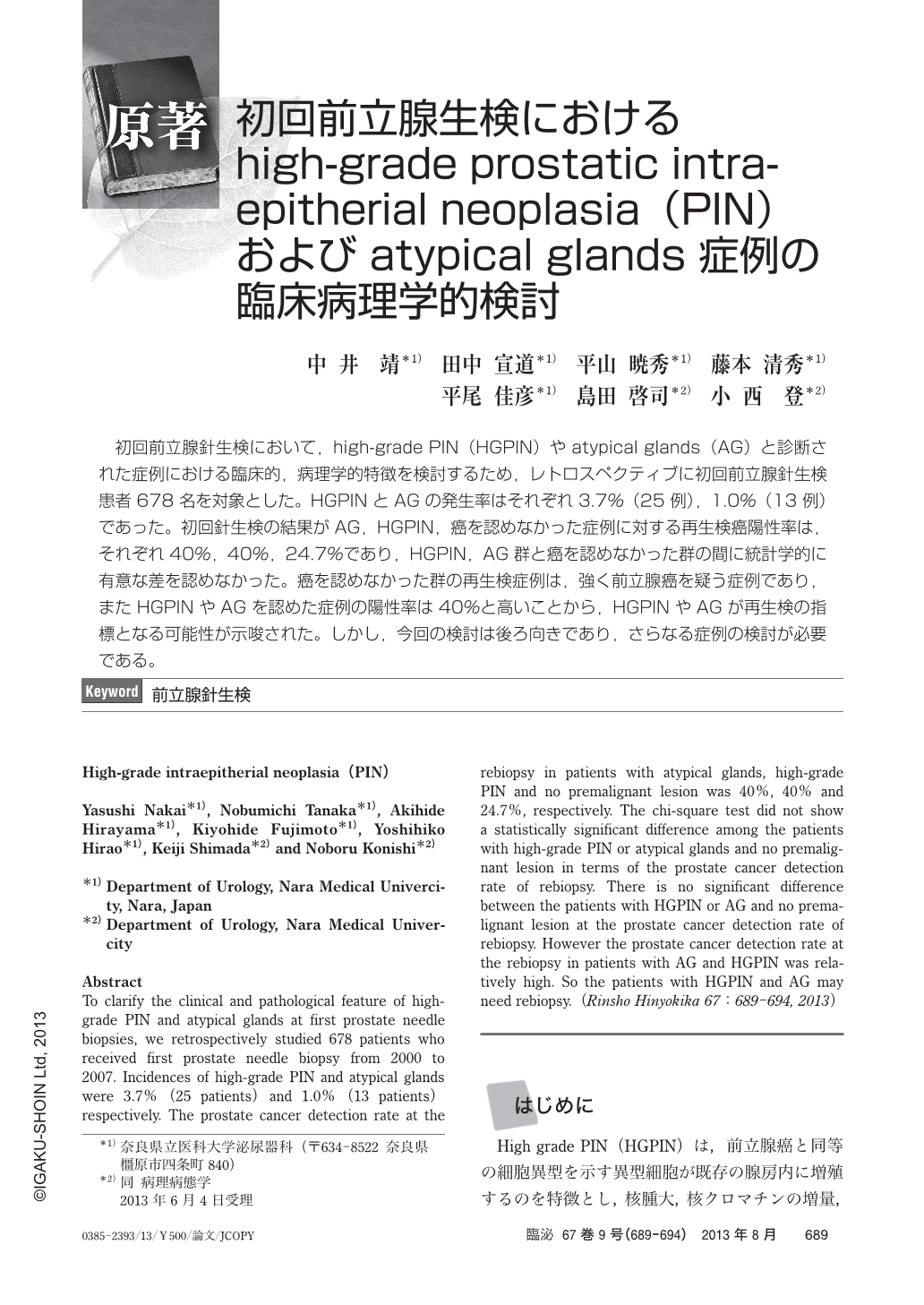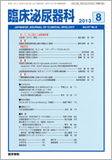Japanese
English
- 有料閲覧
- Abstract 文献概要
- 1ページ目 Look Inside
- 参考文献 Reference
初回前立腺針生検において,high-grade PIN(HGPIN)やatypical glands(AG)と診断された症例における臨床的,病理学的特徴を検討するため,レトロスペクティブに初回前立腺針生検患者678名を対象とした。HGPINとAGの発生率はそれぞれ3.7%(25例),1.0%(13例)であった。初回針生検の結果がAG,HGPIN,癌を認めなかった症例に対する再生検癌陽性率は,それぞれ40%,40%,24.7%であり,HGPIN,AG群と癌を認めなかった群の間に統計学的に有意な差を認めなかった。癌を認めなかった群の再生検症例は,強く前立腺癌を疑う症例であり,またHGPINやAGを認めた症例の陽性率は40%と高いことから,HGPINやAGが再生検の指標となる可能性が示唆された。しかし,今回の検討は後ろ向きであり,さらなる症例の検討が必要である。
To clarify the clinical and pathological feature of high-grade PIN and atypical glands at first prostate needle biopsies, we retrospectively studied 678 patients who received first prostate needle biopsy from 2000 to 2007. Incidences of high-grade PIN and atypical glands were 3.7%(25 patients)and 1.0%(13 patients)respectively. The prostate cancer detection rate at the rebiopsy in patients with atypical glands, high-grade PIN and no premalignant lesion was 40%, 40% and 24.7%, respectively. The chi-square test did not show a statistically significant difference among the patients with high-grade PIN or atypical glands and no premalignant lesion in terms of the prostate cancer detection rate of rebiopsy. There is no significant difference between the patients with HGPIN or AG and no premalignant lesion at the prostate cancer detection rate of rebiopsy. However the prostate cancer detection rate at the rebiopsy in patients with AG and HGPIN was relatively high. So the patients with HGPIN and AG may need rebiopsy.

Copyright © 2013, Igaku-Shoin Ltd. All rights reserved.


